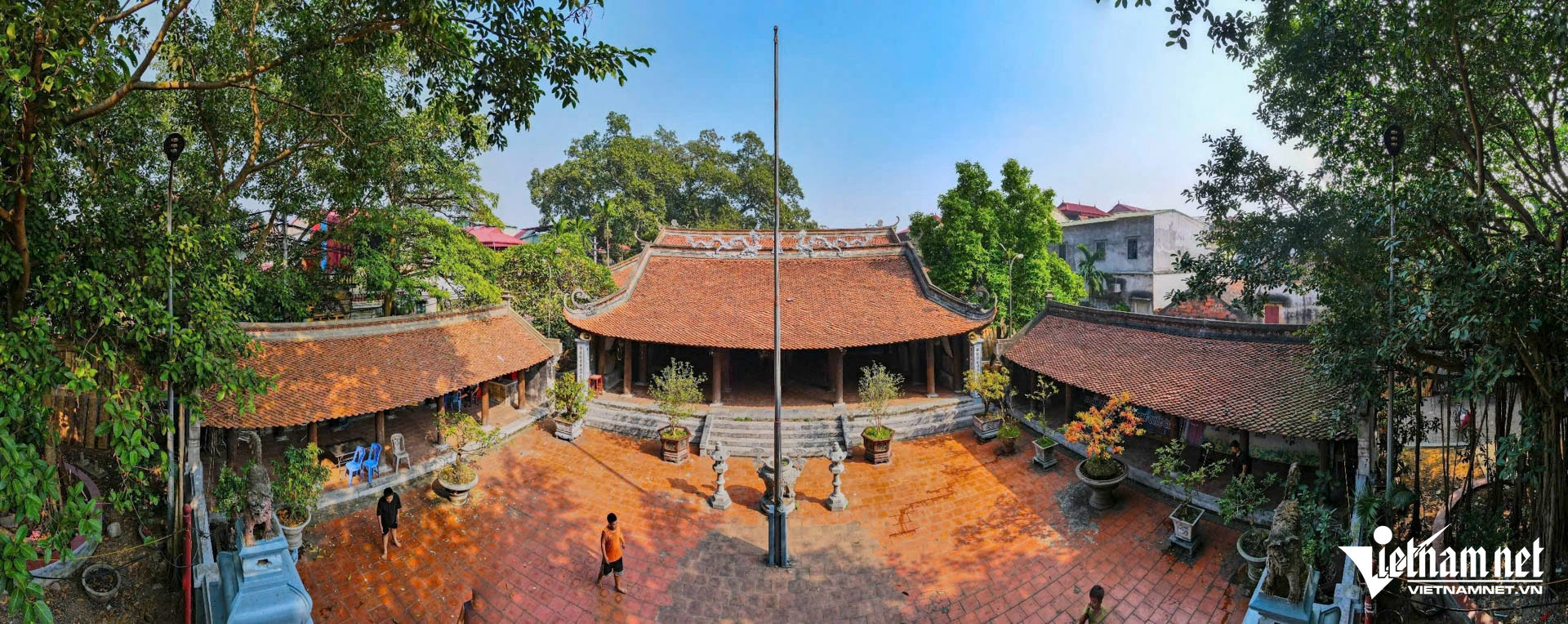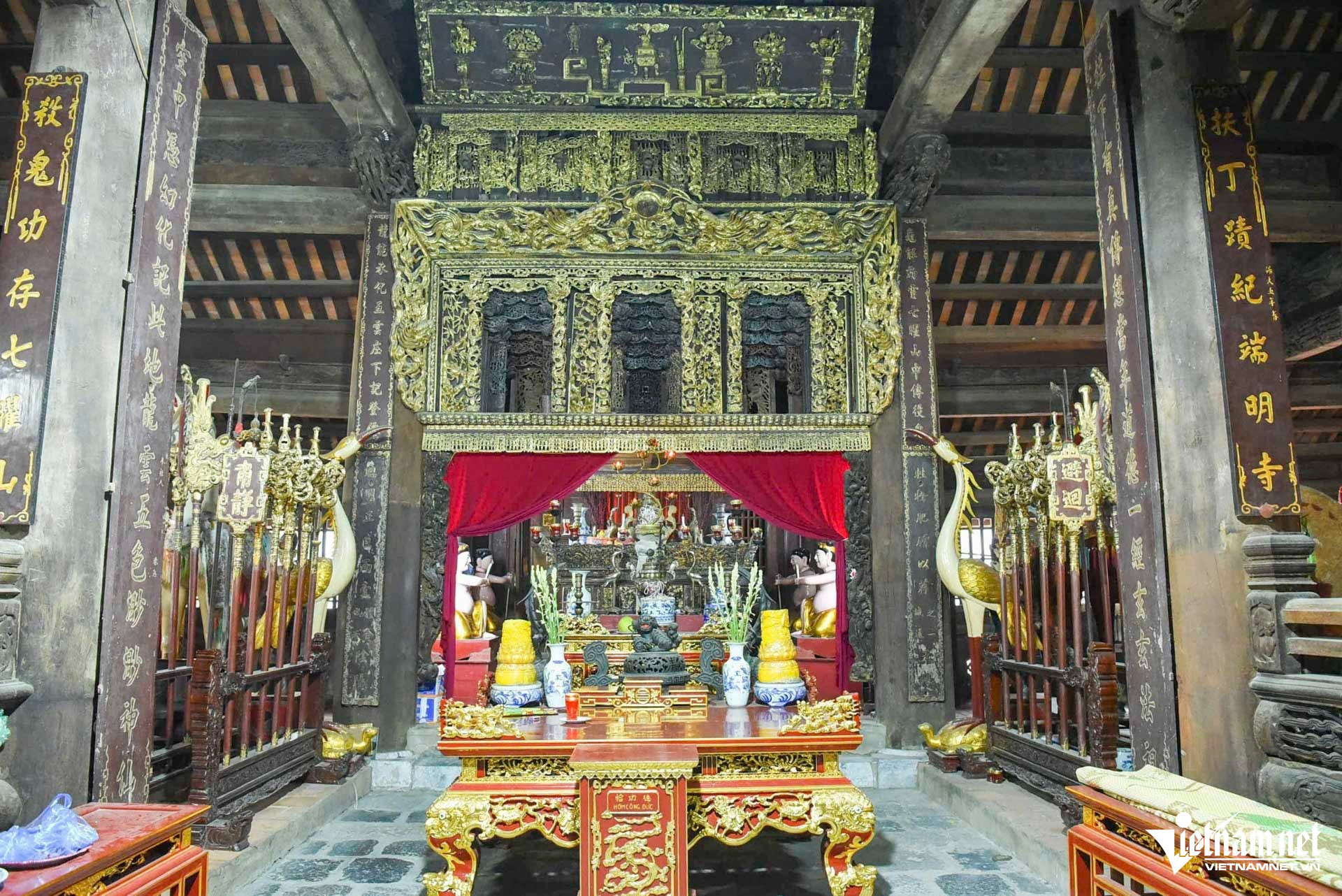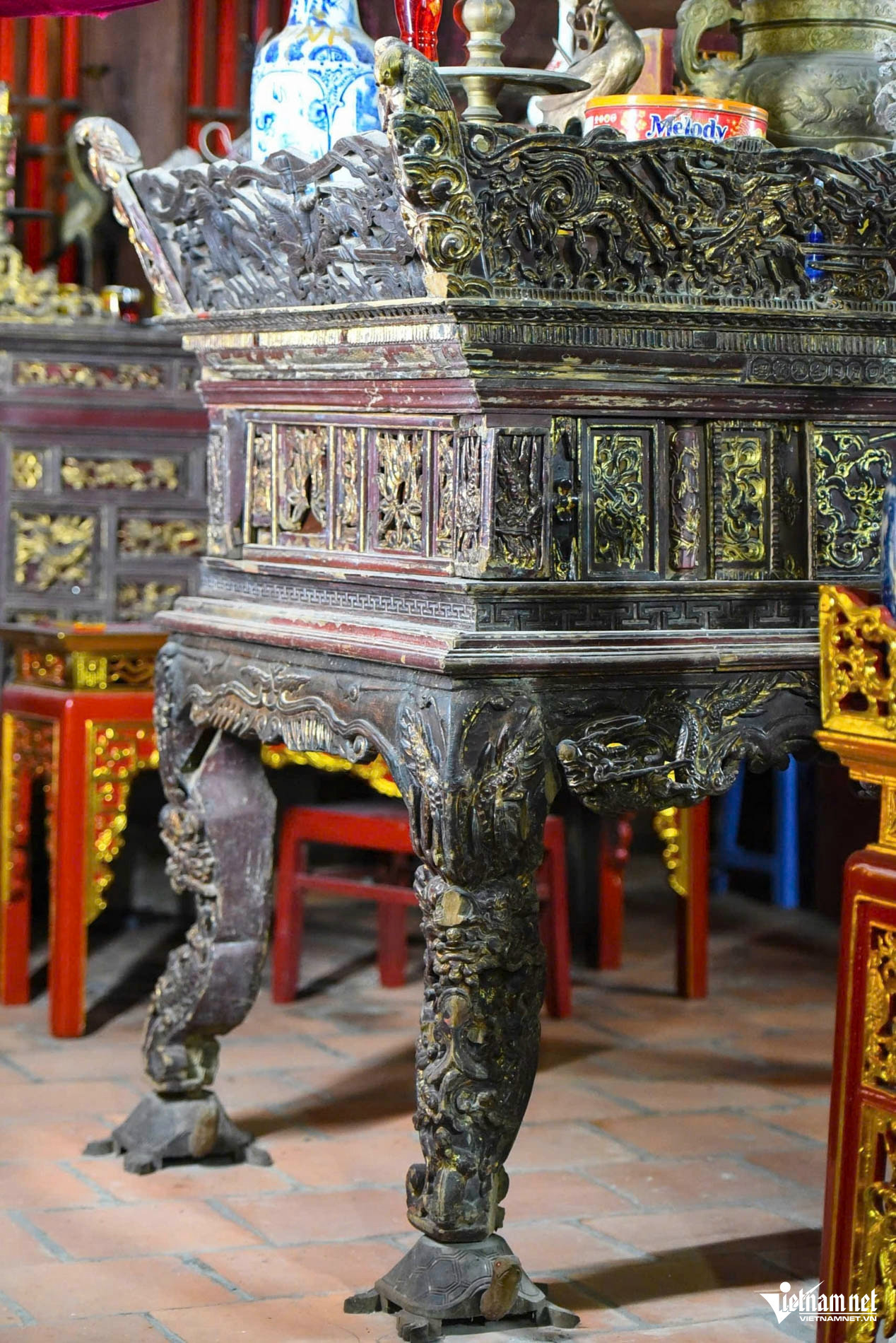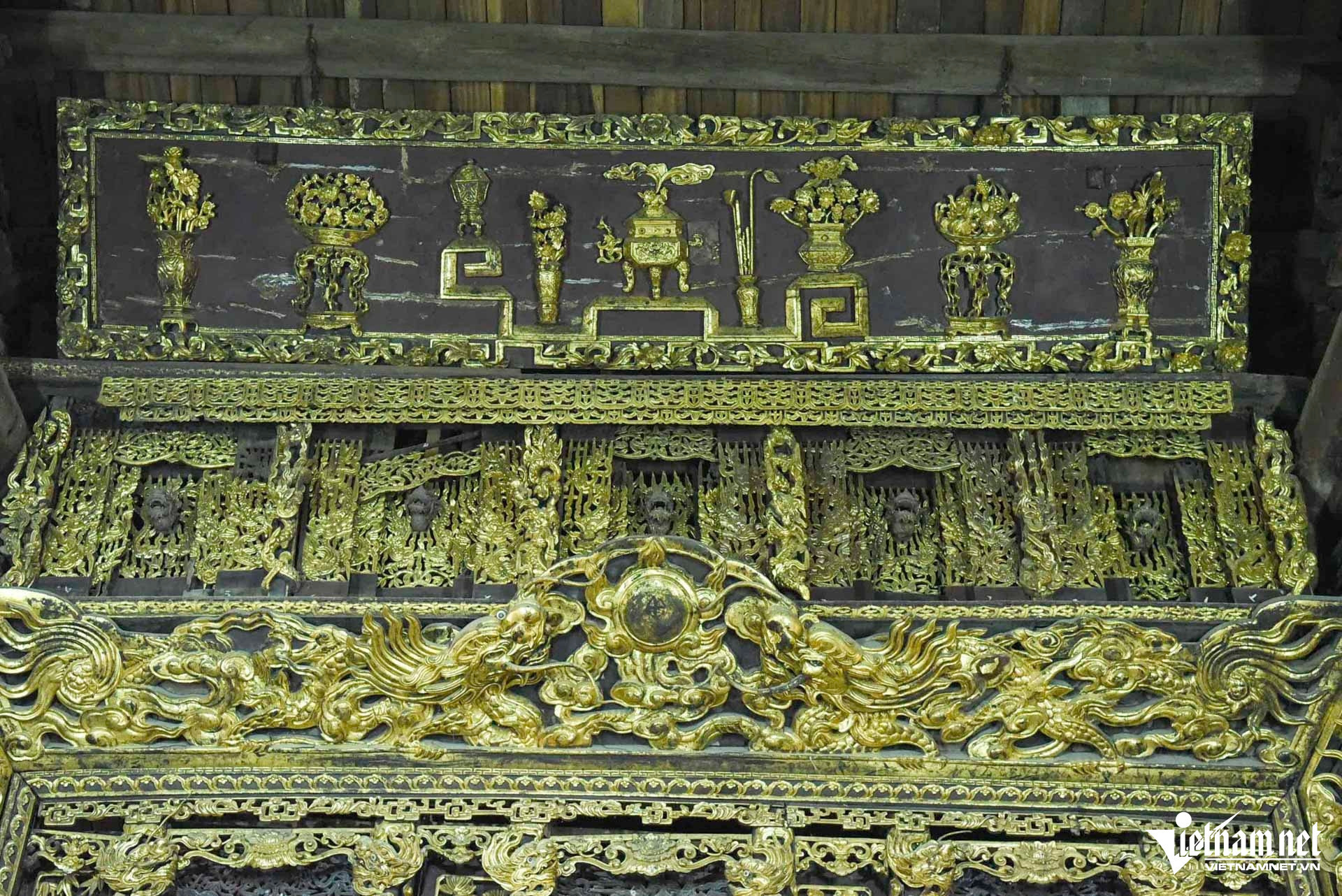Located beside the poetic Cau River, Tho Ha village in Van Ha commune, Viet Yen town, Bac Giang province, has preserved the quiet, ancient charm of a traditional Vietnamese village for centuries. Among its most treasured relics is the altar partition in Tho Ha communal house, honored as a National Treasure in 2020.
Tho Ha communal house was built in 1686 during the reign of King Le Hy Tong. It is a renowned ancient structure in the Kinh Bac region, serving as a center for spiritual and cultural activities and a shrine to the village’s guardian deity, Thai Thuong Lao Quan, and Dao Tri Tien, the founding master of the local pottery craft.

The cua vong was created in the 13th year of the Chinh Hoa reign (1692), funded by local elders, officials, and villagers. Crafted from lacquered and gold-gilded wood with ceramic elements, the partition is both a functional and artistic centerpiece.
According to village elders, the cua vong serves to separate the sacred space from the everyday area while enhancing the solemnity of the rear sanctuary.
The partition is composed of three tiers, intricately carved with motifs of the four sacred creatures and the four seasons. The central section features three altars.

Covered in lacquer and gold leaf, the partition dazzles with its intricate design. Every section is finely decorated, immediately capturing attention and reverence.
The partition stands 4.9 meters high and 4.3 meters wide, comprising three levels densely carved with artistic details and symbolic motifs. The overall impression is one of grandeur and exceptional craftsmanship.

The upper portion consists of two horizontal carved panels layered atop one another, featuring pierced cloud patterns in stylized geometric layouts. The central section is divided into five large compartments, separated by six carved pillars with dragons spiraling upward, their heads raised as if worshipping through the altar’s central gate. The carvings are vibrant and dimensional, blending floral, leaf, and animal patterns with graceful fluidity.

The materials and techniques used suggest the piece was crafted by artisans from the Tho Ha pottery village, once one of Vietnam’s three leading ceramic centers.
Three central compartments extend deeply into seven layered recesses, featuring vertical curtains carved with dragons poised mid-motion, all facing the sanctuary’s center. The seven horizontal carved panels above depict rich scenes like “bamboo transforming into dragons,” “two dragons vying for a pearl,” clouds, and stylized flora. Each detail was meticulously carved, forming a vivid and dynamic work of art.
Each altar space includes 14 dragon heads, totaling 42, each unique in expression and form while following a consistent artistic style. At the heart of each altar, dragons are carved in piercing detail, coiled around mystical creatures.

This altar partition is an original, one-of-a-kind artifact - among the most aesthetically refined in existence. After more than 300 years and as many annual festivals, its carved elements remain remarkably intact thanks to the devoted protection and preservation efforts of local authorities and residents.
Bao Khanh